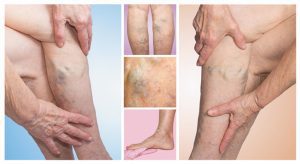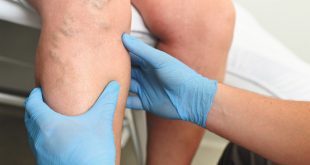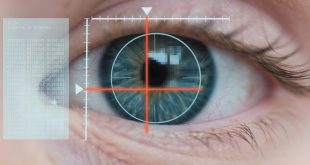 Damaged vein walls hinder the circulatory system, allowing blood to collect and flow backward when the muscles relax. This creates an unusually high-pressure buildup in the veins. This buildup causes further stretching and twisting of the veins, increased swelling, more valve incompetence, sluggish blood flow and potential blood clot formation. Eventually, this condition can lead to various disorders known as venous disease.
Damaged vein walls hinder the circulatory system, allowing blood to collect and flow backward when the muscles relax. This creates an unusually high-pressure buildup in the veins. This buildup causes further stretching and twisting of the veins, increased swelling, more valve incompetence, sluggish blood flow and potential blood clot formation. Eventually, this condition can lead to various disorders known as venous disease.
Venous disease is common. In fact, as many of 15 percent of Americans are affected by varicose veins. Thankfully, these do not pose a great health risk. However, thrombophlebitis can be much more serious, even life-threatening, affecting millions of people each year.1
Types of venous disease Spider veins
Spider veins (telangiectasia) are damaged, visible blood vessels just beneath your skin’s surface. They typically look red, blue or purple. They may appear in clusters that resemble spider webs or tree branches. Spider veins can form anywhere, but they usually develop in your legs or face.
Varicose veins
Varicose veins are deeper. When they become noticeable, they begin to pop out — giving the vein a 3D appearance. These veins supply blood to deep muscle tissue, so they’re bigger. That means when they become visible, they’re more obvious.
Superficial Thrombophlebitis
Thrombophlebitis is the inflammation of a vein (usually in an extremity, especially one of the legs) that occurs in response to a blood clot in the vessel. When it occurs in a vein near the surface of the skin, it is known as superficial thrombophlebitis, a minor disorder commonly identified by a red, tender vein.
Deep-vein Thrombophlebitis
Deep-vein thrombophlebitis (affecting the larger veins farther below the skin’s surface) is more serious. It may produce less-pronounced symptoms at first (half of all cases are asymptomatic) but carries the risks of pulmonary embolism (when the clot detaches from its place of origin and travels to the lung) and chronic venous insufficiency (impaired outflow of blood through the veins), resulting in dermatitis, increased skin pigmentation and swelling.1
Treatment
For hundreds of years, compression therapy has been the main treatment for venous disease. Medical compression therapy includes garments or devices that provide static or dynamic mechanical compression to a body region. For the treatment of lower extremity chronic venous insufficiency, static compression includes compression hosiery and compression bandages. Dynamic (intermittent) compression therapy in the form of intermittent pneumatic compression pumps and sleeves may be useful under select circumstances and with the associated presence of lymphedema.2
The types of compression therapy devices include:
Compression stockings: Stockings that go up to the knee are the most common type of compression apparel. If swelling extends above your knee, you may need longer stockings or tights that come up to your waist.
Manufacturers rate compression socks based on how much pressure they provide. The amount of compression you need depends on your condition. The units for measuring compression are mmHg, or millimeters of mercury. There is no standard scale for rating compression stockings. In general, the categories of pressure are:
• Low (less than 20 mmHg).
• Medium (20 to 30 mmHg).
• High (greater than 30 mmHg).
Bandages and wraps: Elastic bandages and Velcro wraps may be easier to apply for people who have difficulty putting on socks. Bandages are usually applied in multiple layers.
Inflatable devices: Intermittent pneumatic compression (IPC) is a device that consists of a centralized air-pumping machine that is connected to a sleeve with multiple air chambers. When fitted over a limb or body region, the sleeve is inflated, causing it to squeeze or compress the areas of the body contained within.
• Lymphedema: This is a buildup of lymph (a kind of fluid) in soft tissue that causes swelling, which often occurs after cancer treatment. Compression sleeves and IPC are used to help control symptoms.
• Venous ulcers or impaired venous function: IPC helps to stimulate blood flow.
• Blood clot (deep vein thrombosis) prevention: Extended periods of inactivity (such as after surgery or during injury recovery) can slow blood flow, increasing the likelihood of red blood cells clumping together and forming a clot. IPC is used to prevent this from happening.3
If you are suffering from venous disease, contact the professionals at Central Florida Vein and Vascular Center to schedule a consultation. They are leaders in comprehensive vein care and will be glad to help you find the right treatment for you.
Central Florida Vein & Vascular Center
(352) 562-0078 . www.cfvein.com
13953 NE 86th Terrace, Unit 101
Lady Lake, FL 32159
MOST PROCEDURES ARE
COVERED BY INSURANCE
Convenient Golf Cart Path Access
Central Florida Vein & Vascular Center, where our specialty is the improvement of your venous health. Our experienced team of Board Certified Fellowship Trained Vascular Surgeons are providing patients of all ages with the most advanced, minimally invasive care and treatments for varicose veins, spider veins, leg pain, leg wounds and swelling, as well as many other painful and unsightly conditions caused from the effects of a venous insufficiency.
If you are one of the more than 25 million Americans who suffer from some sort of venous related problem, or know someone who does, you owe it to yourself to learn more about the safe and virtually painless, non surgical out patient treatments that are available to you at any one of our three convenient Central Florida locations.
References:
1. Venous disease (2021) Venous Disease | Johns Hopkins Medicine.
Available at: https://www.hopkinsmedicine.org/health/conditions-
and-diseases/venous-disease.
2. UpToDate. Available at: https://www.uptodate.com/contents/
compression-therapy-for-the-treatment-of-chronic-venous-in
sufficiency.
3. Tim Petrie, D. (2022) How pneumatic compression is used in physical
therapy, Verywell Health. Available at: https://www.verywellhealth.com/
how-pneumatic-compression-is-used-in-physical-therapy-5202654.
 Central Florida Health and Wellness Magazine Health and Wellness Articles of the Villages
Central Florida Health and Wellness Magazine Health and Wellness Articles of the Villages



